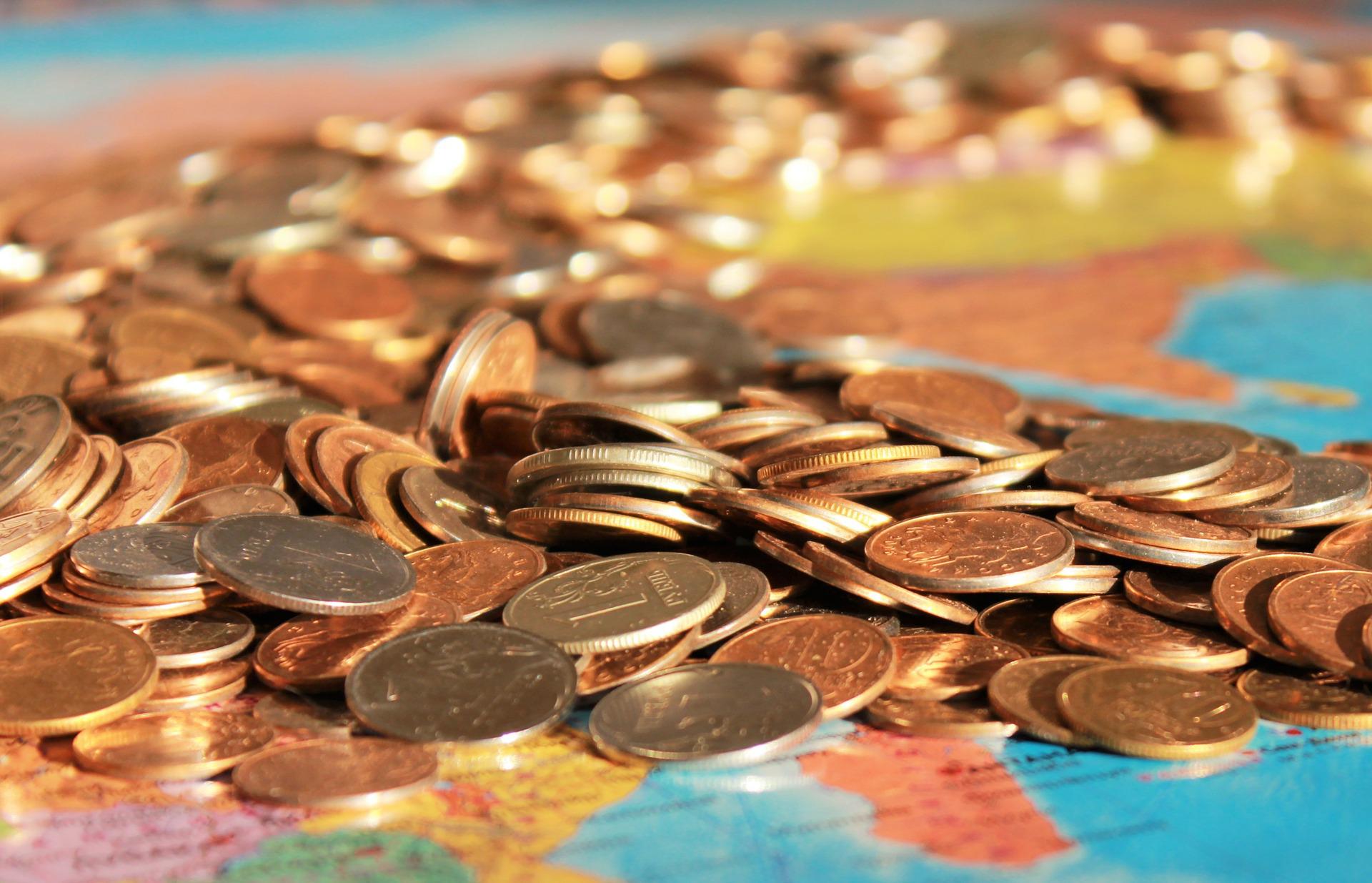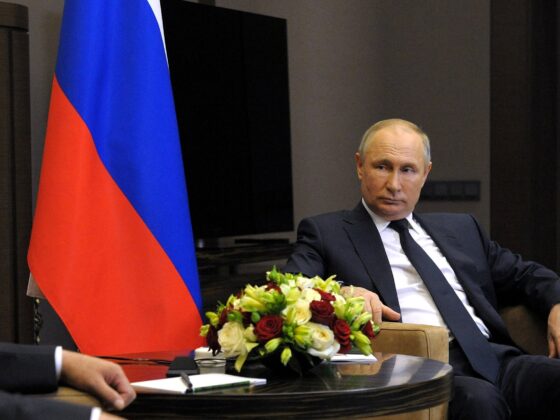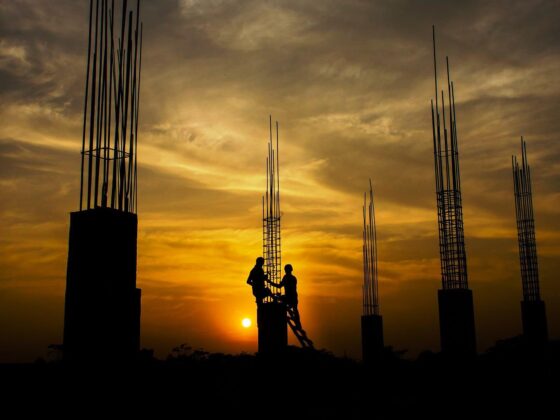The sanctions now imposed on Russia—as severe as they are—are unlikely by themselves to lead to widespread protests demanding political change. Although at the time of writing, the exact cumulative impact on Russian society is yet to be seen, Russia’s economy has already plunged into a deep recession, with projections of economic contraction of over 11 percent in 2022. Yet, even before the invasion, there were few pathways out of Russia’s economic malaise that did not raise the prospect of potentially destabilizing social protest. Might the Russian government undertake reforms to revive the economy? If so, the answer to the key question for Russians of Kto vinovat?—Who is to blame?—could shift from the West and its sanctions to the Putin regime itself. While a mass uprising in the near term appears improbable, low wages and low productivity in Russia have led to a stagnating economy, which over time raises the potential for social and, ultimately political, protest.
Existing Economic Challenges
Whatever their intentions, economic sanctions by themselves rarely lead to regime change. Sanctions provide a country’s leadership with a ready way to deflect blame for a population’s suffering. As with war itself, the imposition of sanctions can lead to a “rally ’round the flag effect,” at least in the short term, particularly in a country such as Russia, where mass media remain firmly under state control.
Yet Russia’s economy was already facing stagnation before the current sanctions, with real disposable incomes 10 percent lower in 2021 than they were in 2013. The reasons are multiple, but the legacy of the Soviet past remains a major challenge for Russia’s economy. Despite the dramatic economic decline of the 1990s, Russia averted mass unemployment, but only through huge drops in wage levels (including, for a time, their non-payment). Though Russia avoided a “social explosion” during this period, it also evaded substantial restructuring of the Soviet industrial infrastructure. While wages rose again from their nadir with economic growth in the 2000s, Russia remains a high-employment, low-wage economy.
Low wages, however brutal for workers, can become a country’s global comparative advantage, provided that the economy is centered on the export of labor-intensive products. However, this is simply not the case in Russia, where outside of certain firms in the metals sector and military industry, Russian manufacturing exports are non-competitive. With wages low, there is less incentive to invest in education and technology. Why should an individual spend time and money upgrading one’s skills when there is little payoff? The failure to invest sufficiently in education has contributed to a decline in Russia’s human capital, a problem that has become “colossal” according to a number of leading economists and business experts (and this before the current exodus of educated Russians). The same is true with lagging investment in technology. Why should a firm spend money on expensive machinery when it can add more workers cheaply and pay them even less when times are tough?
Simply put, paying workers cheaply and failing to invest in education and technology reduces productivity. As Paul Krugman noted, “productivity isn’t everything, but in the long run, it is almost everything. A country’s ability to improve its standard of living over time depends almost entirely on its ability to raise its output per worker.” Unless oil and gas prices remain high, future economic growth in Russia will almost certainly depend on increasing labor productivity.
Raising productivity would appear all the more compelling given Russia’s demographic challenge, namely the decline in its working-age population. That challenge would be less daunting if those in the workforce were able to produce more, making the question of productivity all the more crucial. Yet Russian labor productivity is very low by comparative standards. According to the OECD, for every hour worked, a Russian worker contributes the equivalent of twenty-three U.S. dollars to GDP, while the comparative figure for both the United States and Germany is sixty-eight. Indeed, Russian labor productivity is lower than that of Chile and Turkey. Of 36 OECD comparator countries, Russia outranks only Mexico and South Africa (see Figure 1).
Figure 1. Russian Labor Productivity

Low wages create other social and economic problems as well. One is that workers will often seek out informal employment in jobs that are typically even less productive and with pay that does not contribute to revenue or social welfare funds. Increasing consumer debt has been another way that Russians have dealt with persistently low wages. The low level of consumer demand remains a major hindrance to economic growth in Russia.
Besides low wages, Russia’s productivity is impeded by the many large factories inherited from the Soviet era. As of 2014, 80 percent of Russian workers employed in manufacturing were working in large enterprises (those employing 250 or more workers), by far the highest proportion of the 36 countries surveyed by the OECD. In almost all of those other countries, the majority of manufacturing workers were employed in small and medium-sized firms, which tend to be much more productive (see Figure 2).
Figure 2. Russians Employed in Manufacturing

While those large factories remained afloat during the 1990s, when times were bad, they also avoided major transformation during the oil boom of the 2000s. Workers remained employed, but given low productivity levels, the overall result was that Russia became stuck in what economists call a “middle-income trap.”
All of this was true before the potential impact of new and substantial economic sanctions on Russia’s economy. True, oil prices have peaked and could remain high for an indefinite period. However, with the prospect that global initiatives to stem climate change might begin to lower the demand for oil and gas as early as the next decade, the imperative for economic reform would appear all the greater. The absence of reform creates its own challenges since, to many Russians, stability has begun to look like stagnation, with a significant impact on living standards. Needless to say, beyond economics, all of this has social—and ultimately political—implications.
Social and Economic Protest
How might Russia escape the “middle-income trap”? The pathologies generally associated with that trap are well known to Russia: low productivity, low-skilled and low-paid work, inequality, and informality. Economists argue that there is a pathway out of that trap: the key is to boost productivity growth through investment, especially in higher and technical education and research and development. In Russia, liberal Kremlin advisers such as Aleksei Kudrin have long pushed for such policies.
Yet, as Doner and Schneider argue, the central challenge to escaping the trap is “more politics than economics” since the shifting of resources inevitably entails creating winners and losers out of different social groups. For instance, Kudrin and Gurvich have argued that boosting economic growth in Russia will require “facilitating the movement of factors of production from less efficient to more efficient industries, i.e., to intensify what Schumpeter calls the process of ‘creative destruction.’” However creative such a process might be in the long term, the destruction of existing workplaces could well lead to widespread unemployment. That would be a substantial break from Russian practice, going back to the Soviet period, and would almost inevitably raise the likelihood of protest.
Indeed, most worryingly for the Kremlin, there are few paths out of Russia’s economic malaise that will not threaten to spark social protest, with the potential for political instability. The Russian experience of the last two decades suggests that it is not a hardship by itself that ignites economic protest but rather concrete government actions that push the population beyond their level of tolerance. When that happens, the answer of “whom to blame” becomes clear.
Russian society suffered tremendous economic hardship in the 1990s. Yet, in that era, when the collapse of Communism coincided with privatization and the first taste of the free market, apportioning blame proved difficult. In contrast, the Putin-era economy has increasingly become state capitalist, with the visible hand of the government near ubiquitous.
In explaining how social and economic protests have spread in Russia in recent years, my colleague Irina Olimpieva and I have drawn on the classic work of Charles Tilly, who developed the concepts he called “netness” and “catness” to explain successful protest mobilization. Netness refers to the ability of protests to spread through networks, such as labor unions, opposition groups, or other forms of civil society. In Russia, those groups are increasingly repressed or under Kremlin control. Catness refers to individuals belonging to a single category. Should the government undertake an action that adversely impacts all members of that category, other isolated individuals can suddenly find themselves united in a common cause.
When that happens, protests can erupt spontaneously, with little reliance on Russia’s demoralized opposition and beleaguered civil society. For example, the government’s attempt in 2005 to replace free public transportation for pensioners with cash benefits led protesters to rise up, with little coordination, in numerous cities across Russia, forcing the government to back down. A raising of the pension age in 2018 led to similar protests, even though the direct impact on the population would be delayed for years. During the global economic crisis of 2009, the government imposed a tax on imported vehicles in an attempt to preserve jobs in the domestic auto industry. But that quickly led to protests in Russia’s Far East, where used Japanese cars were popular (riot police flown in from Moscow finally subdued the protesters denouncing Vladimir Putin). A tax on long-haul trucks in 2015 led to a spontaneous protest of truck drivers from Dagestan to Chita. While the truckers—seen as part of Putin’s core supporters—initially pleaded “President, help us,” in little over a year they called for a general strike, demanded the government resign, and tried to have their leader run for president against Putin (he was harshly repressed).
While protests with overt political demands have been dealt with severely in Russia, even before the invasion of Ukraine, protests based on social and economic grievances have been treated more leniently. However, the examples above demonstrate how social and economic protests can become quickly politicized. Moreover, protests by such groups as pensioners and truck drivers are extremely problematic because they point to dissatisfaction within Putin’s presumed base of support.
Color Revolutions
Putin has long been consumed by the prospect of “color revolutions,” popular revolts he believes are incited by the United States, such as the 2014 Maidan revolution that chased Russian-backed President Viktor Yanukovych out of Ukraine. (Putin and President Xi Jinping of China denounced color revolutions in their recent joint statement). While many outsiders have expressed hope that Putin might be deposed by fellow elites in a “palace coup” in the post-Soviet space, such changes of leadership have come almost exclusively through mass-based color revolutions.
Putin survived the 2011-12 “Russia without Putin” protests—arguably the closest Russia has come to its own color revolution—in part by claiming that he maintained strong support from the “real Russians” in the country’s industrial and rural heartland against the liberal cosmopolitan protesters in Russia and St. Petersburg. However, that claim became much harder to make in the years in conditions of declining wages and standards of living (even before the recent imposition of sanctions). Moreover, color revolutions in neighboring states have been closely connected to economic grievances and unpopular government actions.
For example, next door in Belarus, citizens took to the streets in large numbers in 2017 to protest a new tax on “parasitism”—essentially a tax on underground employment—with demands for President Alyaksandr Lukashenka to resign. The tax was scrapped, but the demonstrations presaged the country’s even larger uprising in 2020. While the protests then centered around Lukashenka’s fraudulent reelection, with the country’s economy suffering due to reduced subsidies from Russia, workers—presumed by Lukashenka himself to be his base of support—joined the protests from numerous factories and workplaces throughout the country. The mass uprising in Kazakhstan this past January was set off by an increase in gas prices and began in Zhanaozen, a city synonymous in the country for labor strife, where the government had shot and killed over a dozen striking workers in 2011.
The leaders of Belarus and Kazakhstan remained in power, but arguably only through Russian backing (and in the Kazakh case, direct Russian intervention). Following the Maidan revolution, Ukraine’s Yanukovych fled to Russia with whatever he could carry in his suitcase, and the stolen spoils he left behind became a “museum of corruption.” Should a similar uprising occur in Russia, who will prop up Putin? Where could he flee?
Conclusion
To be clear, there is little prospect of a mass uprising in Russia anytime soon. Sanctions and resulting hardship will be blamed on the West, as Russia’s state media portrays the country as a besieged fortress. Oil and gas revenues could remain high for an extended period. But, with time—a time that could be measured in years rather than months—the Russian government may feel compelled to undertake painful reforms to improve otherwise intolerable economic conditions. Doing so would prove precarious, as the answer to the question—Kto vinovat?—could then become Putin himself.
Stephen Crowley is Professor of Politics at Oberlin College. He is the author of, Putin’s Labor Dilemma: Russian Politics between Stability and Stagnation (Cornell University Press, 2021), from which this memo is drawn.
Image Credit/Klimkin











